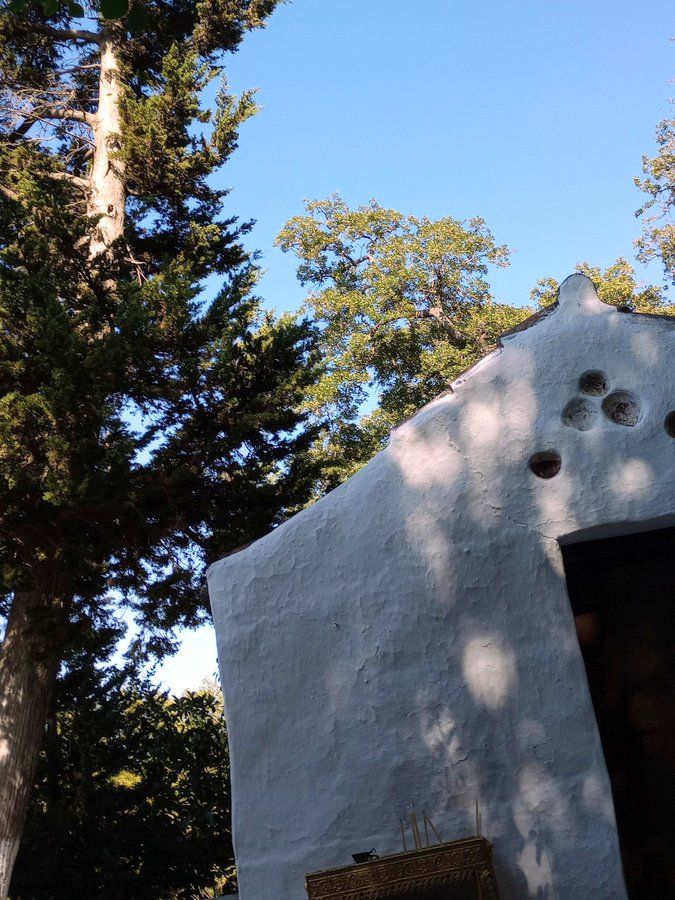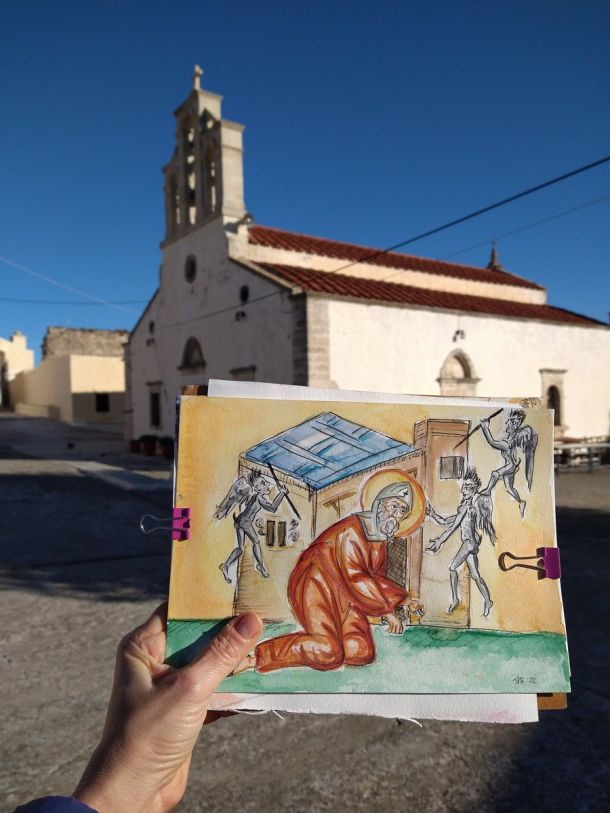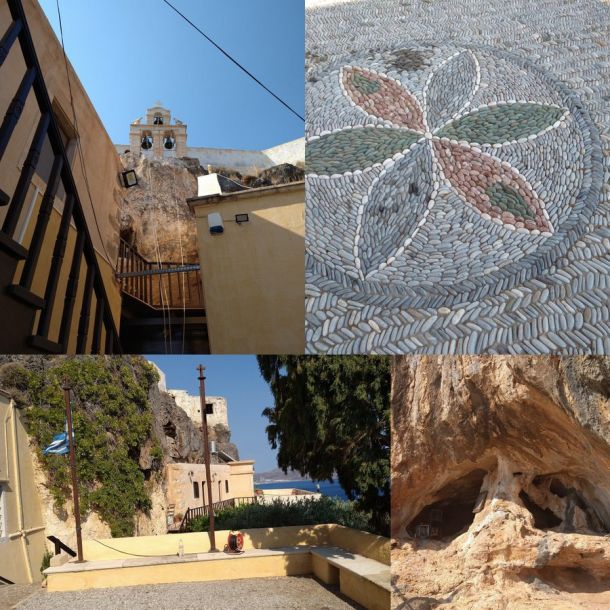St Stephanos in Dracona

Life of St Steven
Saint Steven -or better Stefanos in Greek- was a Deacon saint. One of the seven deacons of the church of Jerusalem, according to the acts of the Apostles. He is also was called the “Protomartyr” for he was the one that was first martyred for Christ. You may recognise him in byzantine icons, where he is a young man dressed in deacon’s vestments. He is holding a Church and is swinging a censer. In many icons, he also has a stone on top of his head (like in here) . His feast is celebrated right after the Nativity of the Lord (December 27th for the Orthodox Church).
The Chapel
The one- isled Church of St Stephen was built at the end of the fist byzantine period (9th century). The frescoes that are decorating its interiors were made at a later time, about the mid 14th century. Despite that time -and humidity of the area- has ‘nt done any particular favors to the beautiful decoration of the Chapel, many scenes are still obvious. Entering there, one may see all around the small chapels’ walls and low ceiling, frescoes executed in a graphic way with bright complementary colors. Apart from the usual scenes of the 12 feasts, the novelty here is the presence of St Steven in most of the part with rare representations and scenes of his life and martyrdom. The picture attached below shows the his martyrdom; As you may are very well aware, St Stephen was stoned to death.
![]()
![]()
Here is the video of the path that leads to the chapel. As you can see a soft, soul-soothing spring rain and the birds chirping are greeting @spurosgranas on the way there. A pure delight for the soul!
Operating hours:
The hours that you may find it open are usually vague, especially for small chapels on the countryside. Nevertheless there’s a substantial effort from the local community and priests to keep them open and running. Anyway, even if you find it closed, you an always ask on the village’s “kafeneio” .
How to Get There:
From Chania head further on the west to the coastal village of Kolymbari and then turn inland. Following are the google map coordinates:
https://maps.app.goo.gl/rxyTxycuCpwu28Vp8
- Sources: Unfortunately there’s limited info on the web for St Stephanos in Dracona – I visited, among others, the www.oac.gr
- More: If you like to see more posts like that visit my blog, I ll be posting -monthly- about places I love in Crete





